

Max Davies
2026 Toyota HiAce review
7 Hours Ago
Does the veritable veteran of the small crossover/SUV set still offer enough spark and value to deserve your attention?

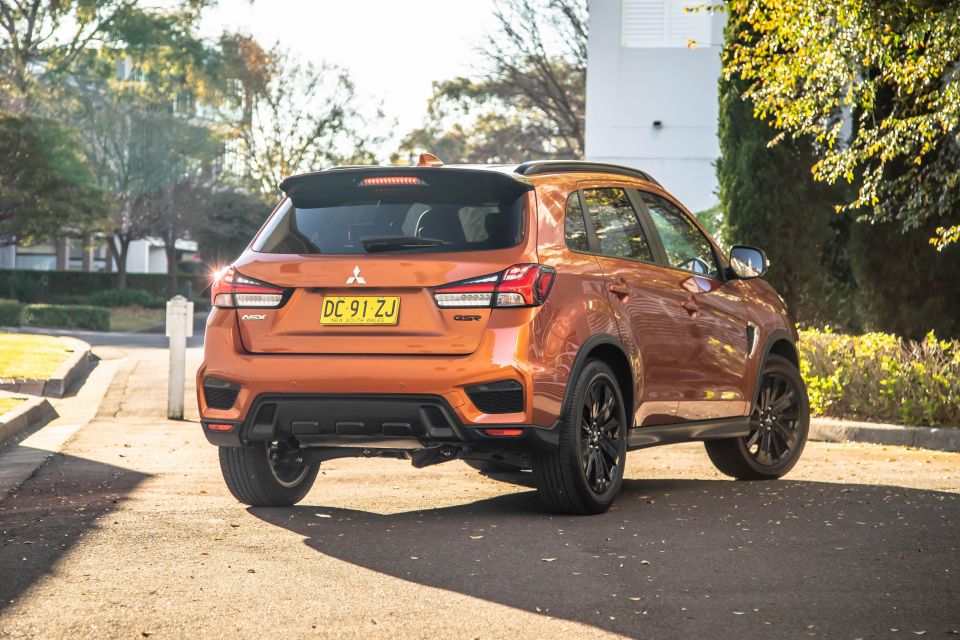

Quickly see how this car stacks up against its competition. Select any benchmark to see more details.
Where expert car reviews meet expert car buying – CarExpert gives you trusted advice, personalised service and real savings on your next new car.
If you’re onto a good thing, stick to it – or so seems the mantra of the Mitsubishi ASX, now a dozen years old in its current generation and wearing its fourth facelift which itself lobbed back in 2019.
Finally, a new generation ASX with Renault Captur-shared DNA, will lob on the world stage in the coming months and with it, long-awaited turbocharged and electrified power. Now, as to if and when this all-new model might arrive Down Under…
The most recent news for the oh-so-familiar current ASX is that Mitsubishi Australia has recently consolidated the range, paring it down to seven variants.
Meanwhile there has been a price rise for the small crossover stalwart that has enjoyed so much success locally partly due to a strong value-for-money pitch.

It’s a good time, then, to revisit the 2022 Mitsubishi ASX GSR that has become the sport-infused, big-engined choice of the range in recent times.
The ASX has long traded off its sweet and practical size and compact and easy-to-drive nature. It’s also relatively cheap to run and dependable enough to prove hugely popular with rental car companies, hence its traditional sales popularity.
But while the 2022 version brings continuity to the ASX’s virtues, there’s a lot that hasn’t progressed much.
Does enough freshness and value remain in the current formula to lure your interest away from its newer competition? Let’s find out.
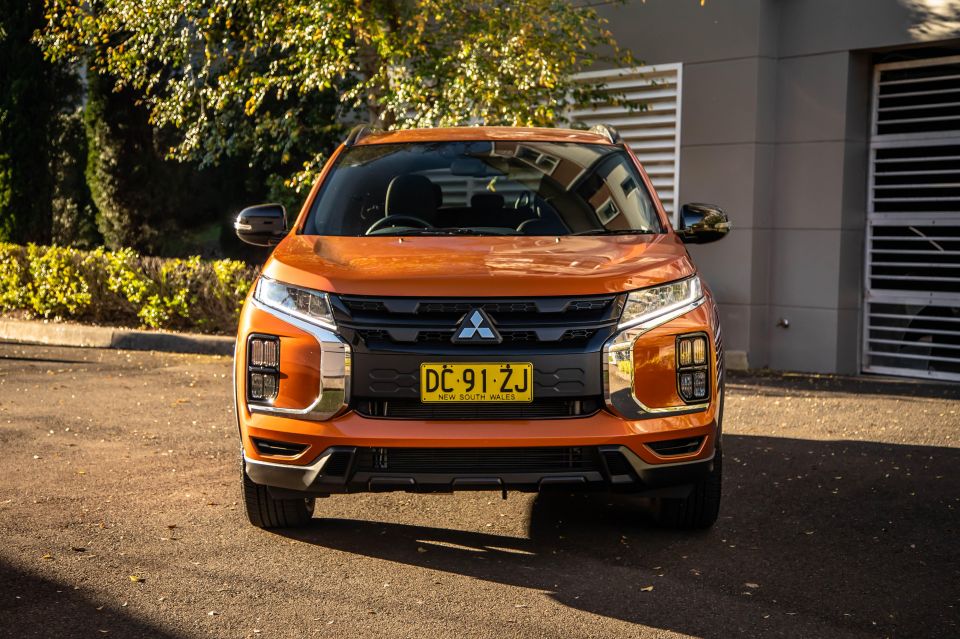
As the penultimate variant in the ASX range, the GSR clocks in at $31,990 before on-road costs. Drive-away pricing for private buyers is from around $34,890 according to the Mitsubishi Australia website.
Pricing has crept up by $500 mid-year for all current variants, with the GSR essentially the middle grade of the three ‘big-engined’ 2.4-litre versions offered, sitting between the MR and Exceed trims.
2022 Mitsubishi ASX pricing:
All prices exclude on-road costs
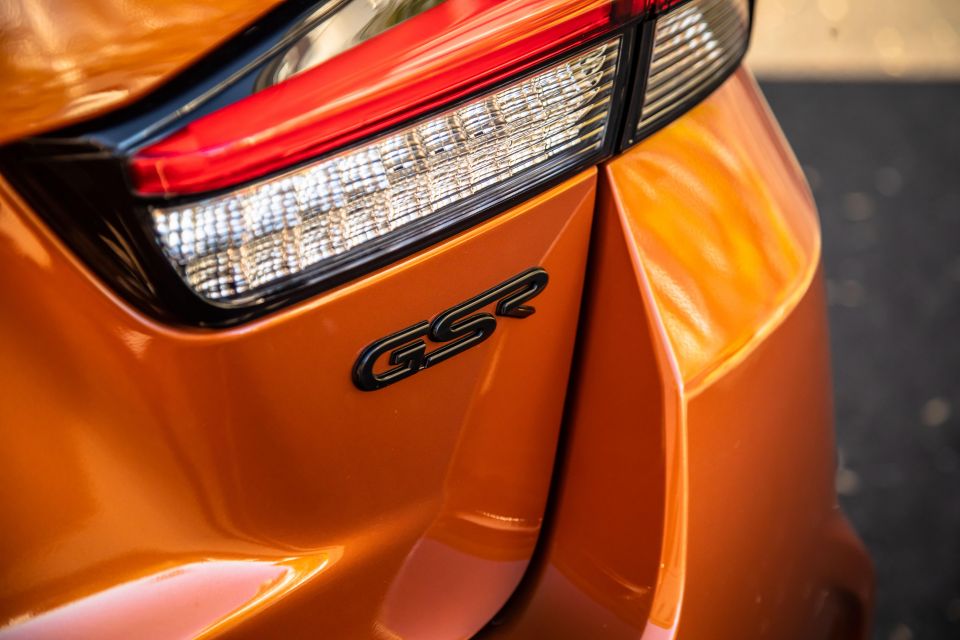
Eight colours are available. Outside of no-cost white, six metallics, such as our tester’s Sunset Orange, command a $750 premium, with a sole Diamond White pearl wanting $940.
Further, a number of style packages are offered to spruce up your ASX GSR, including an Adventure Pack ($2194), Street Style Pack ($2099) and Style Set ($2184) as well as a number of individual upgrades and accessories for extra cost.
A full-sized spare wheel, for instance, is $247.
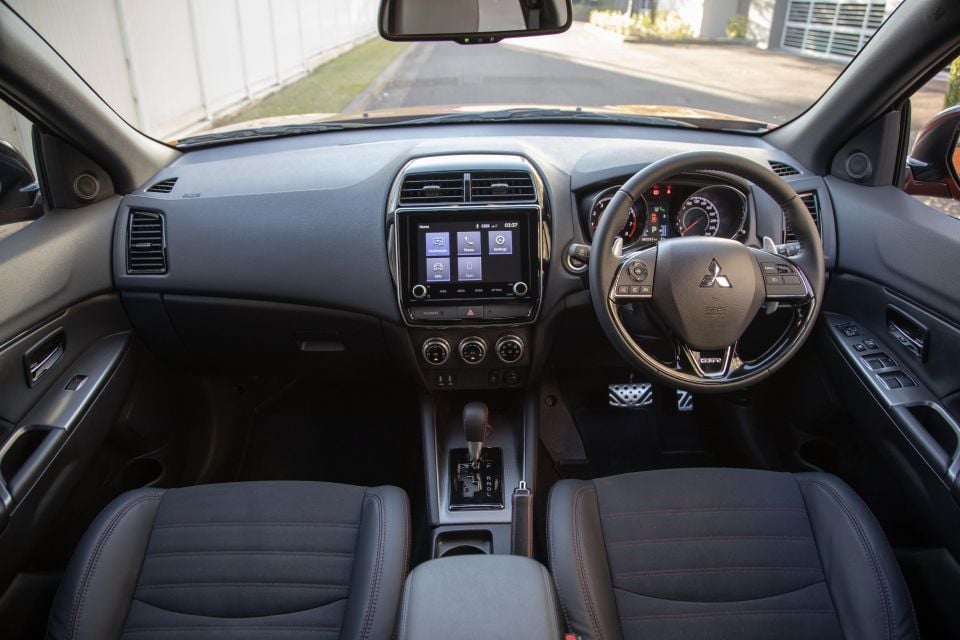
Buy your new car without the stress. It's fast, simple and completely free.

Great service from Travis and team, second time I have used this business would not hesitate to recommend them to anyone
Craig C.
Purchased a Ford Ranger in Sunshine Coast, QLD
CarExpert helped Craig save thousands on his Ford Ranger, now let us save you on your next new car.
Find a dealWhile the ASX exterior styling has been facelifted four times – for a total of five faces – the interior design hasn’t been graced with such an evolutionary push. Mitsubishi’s small crossover looks fresher outside than it does inside.
That the cabin has aged gracefully (enough) for so long is testament to the original design. But from the mid-grey plastic theme and plasti-chrome instrument garnish to the button arrays and overuse of shiny piano black highlights, it’s starting to become more than a little passé.
It looks a generation older than the Eclipse Cross and two or three behind the new Outlander.
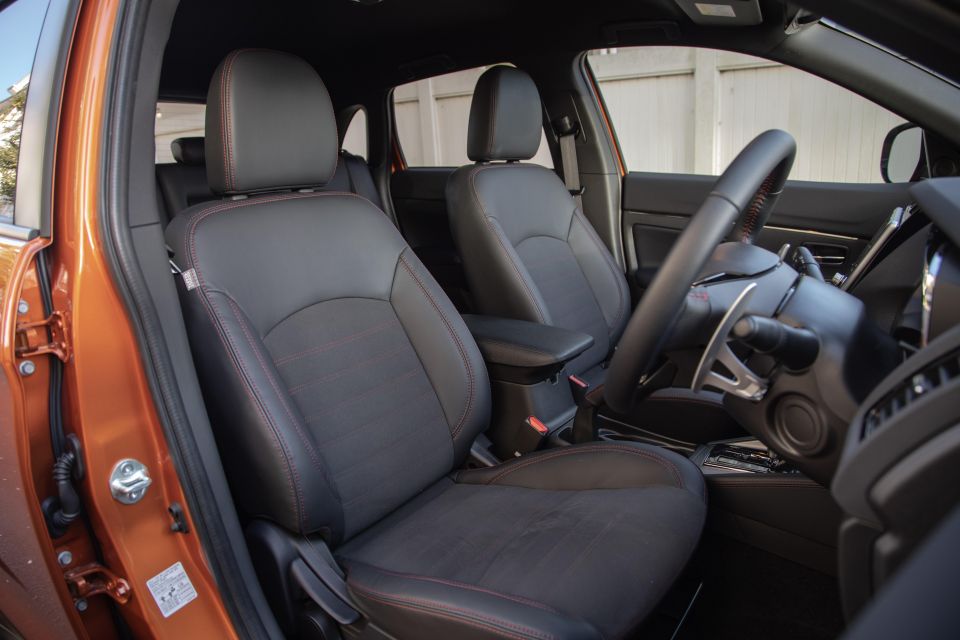

The saving graces are that the ASX cabin is roomy and airy enough in ambience, it’s intuitive in its user interface, and it’s pleasingly unpretentious in its ‘old-school’ sort of vibe.
Material use is mixed, as the decent suede-cloth and faux leather seat trim distracts from some of the ASX’s quite basic plastic finishes.
The front seats are comfy enough, though the height adjustment level would have to be the flimsiest in motoring today.
Seats and rather redundant paddle-shifters apart, there’s not much upmarket fare to distinguish this sporty high-grade model from some of ASX’s lower rungs, bar the start button and some of the chrome work.
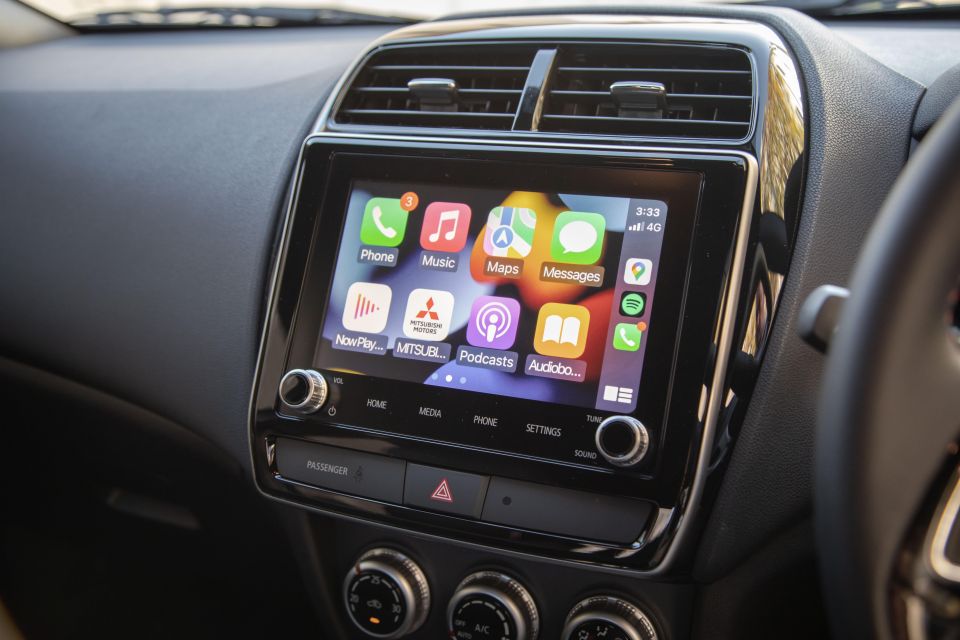
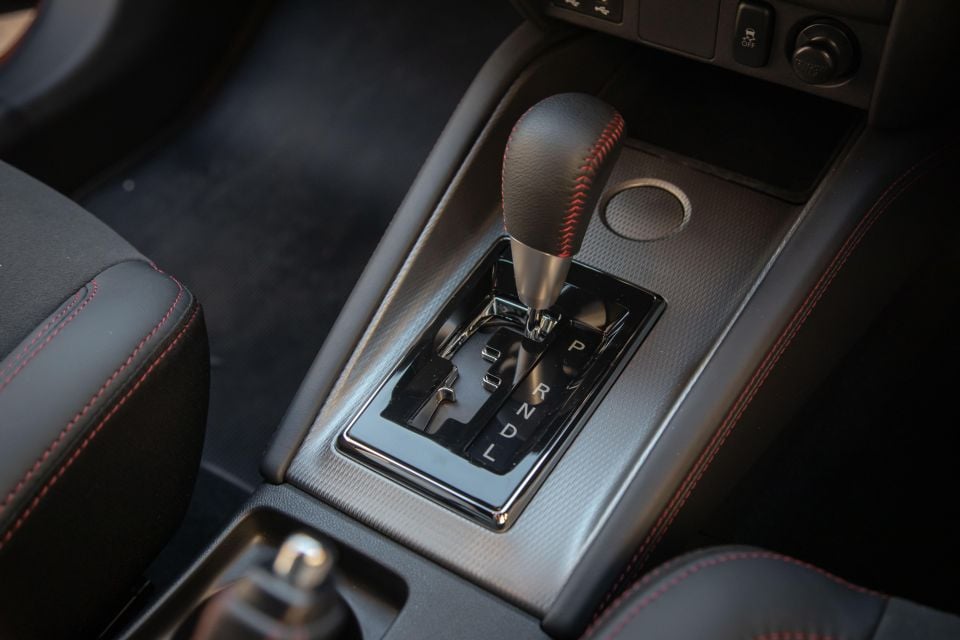
Both the analogue instrumentation – with no digital speedo – and the modest 8.0-inch infotainment systemare cost effective in execution, though the smartphone mirroring integrates quickly and seamlessly.
This is ideal because you’ll need a phone app for navigation given no proprietary feature is fitted.
Second-row accommodation is mixed. The seating itself is comfy and supportive enough and there’s plenty of headroom, but the high window line limits outward visibility for smaller occupants and knee room is quite cramped if you’re an adult.

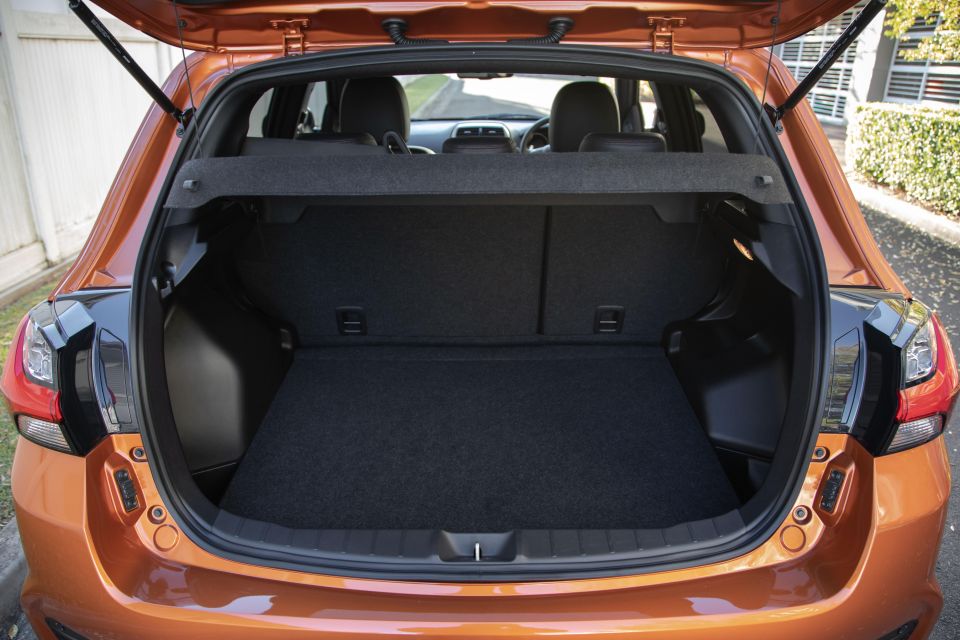
Limitations in family friendliness extend to the lack of rear air ventilation; although, the GSR does fit two USB-A ports in the back of the centre console to power devices.
The limited rear legroom does present some benefit trade-off in boot depth. It measures 393 litres but there’s enough length to easily swallow two large travel cases, which is a benefit for use with rental car companies.
Stowing the 60:40 split-fold rear seat liberates 1193 litres.

The GSR is powered by a naturally-aspirated 2.4-litre petrol four producing 123kW at 6000rpm and a decent 222Nm, which only arrives once you rev it up to 4100rpm. Outputs are 13kW and 25Nm up on the 2.0-litre unit used elsewhere in the ASX range.
While there’s nothing too fancy about under-bonnet motivation, both engines run happily on 91 RON fuel and, as testament via its popularity in the hire car sector, should have dependability and reliability.
The entire ASX line-up uses a CVT automatic transmission with front-wheel drive regardless of engine.
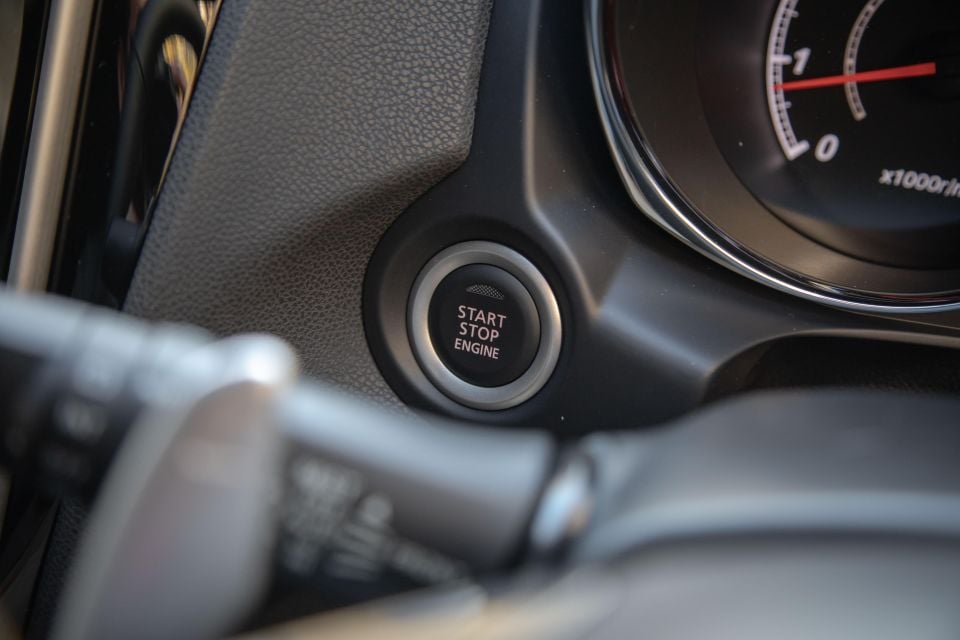
Combined consumption is a claimed 7.9L/100km, or around 0.3L thirstier than versions fitting the 2.0-litre engine. Fuel tank capacity is 63 litres.
The GSR fits 225mm tyres and its chassis brings four-wheel-disc brakes and multilink rear suspension. Its turning circle is a fairly concise 10.6 metres.
At 1398kg kerb, weight is about on par for its size. Meanwhile, braked towing is rated to 1300kg while roof load is 80kg.
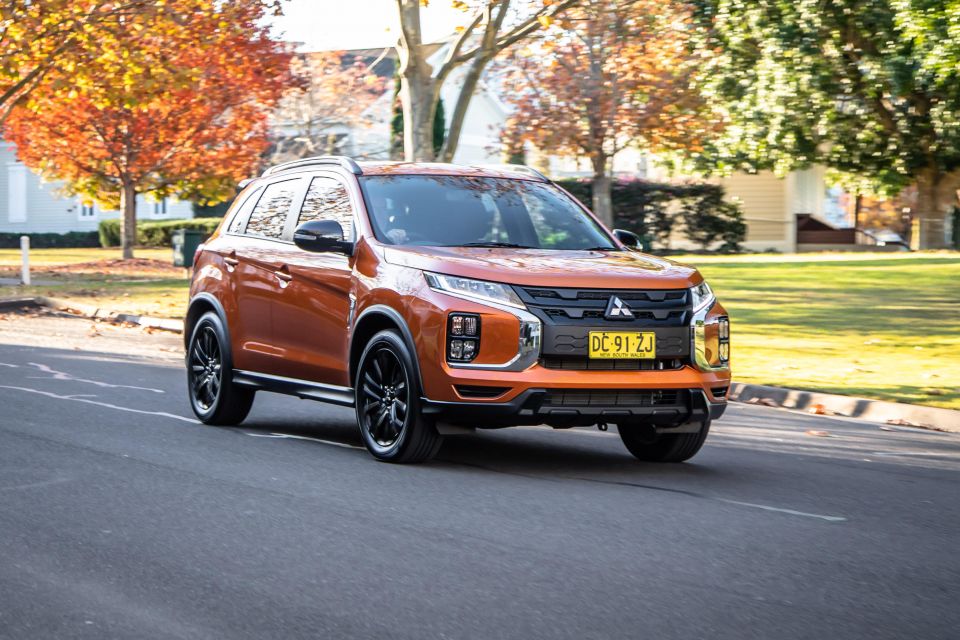
Having driven umpteen ASXs over the years I can confidently say that the GSR drives exactly how I remember they did – for better and for not-so great.
I noted in my last ASX review (the mid-spec LS from two years ago) that its 2.0-litre-equipped powertrain seemed smoother, more polished and better resolved than I remember from my experience of the somewhat gruffer 2.4L Exceed I’d sampled at the last facelift launch back in 2019.
And on balance, this 2.4-litre GSR is closer to my memories of the latter.
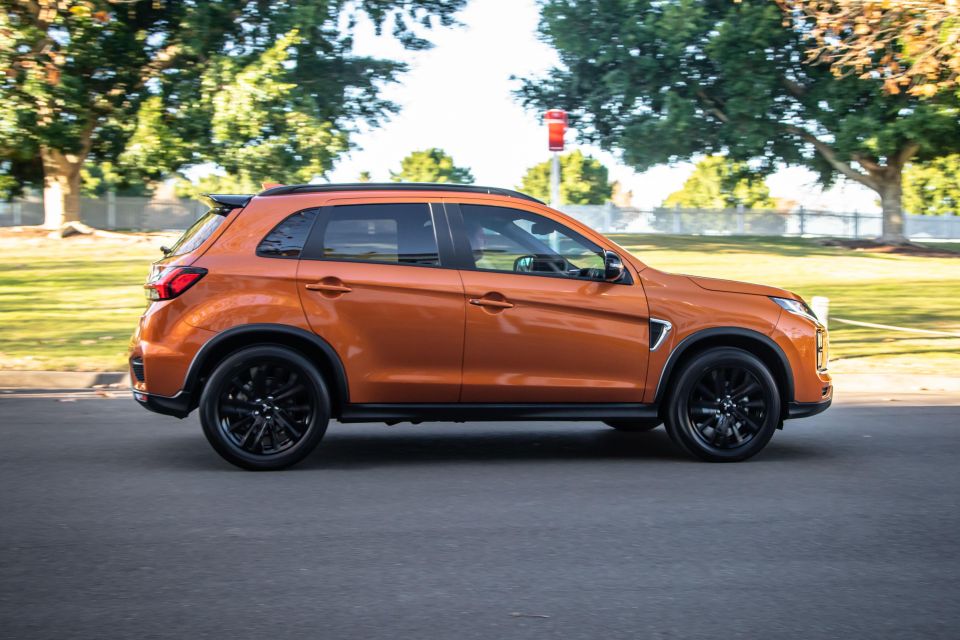
The big-engined ASX experience is punctuated by two things. Firstly, there’s a degree of initial throttle response that’s so urgent that it’s almost alarming. Secondly, when it comes to all-round powertrain refinement, there’s certainly some room for improvement.
The ASX is quite eager to get a hustle on, as the initial sharp response is followed by decent enough thrust plied by a CVT calibration that works with the engine to deliver power quite nicely. Part of the sensation of swiftness is undoubtedly aided by the crossover’s sub-1400kg weight.
Add passengers and the GSR becomes less urgent and somewhat more boisterous in getting going. Why? Because it really wants a rev to harness that high-rpm torque peak. Still, when tasked as a lightly-laden urban runabout, it can certainly get about swiftly enough.
This car is far from the smoothest operator in the small-SUV biz, however. There’s a strange granular vibe to the engine that, at a standstill and in D for drive, sends vibrations through the controls and the cabin just like every other 2.4L ASX I’ve driven to date.
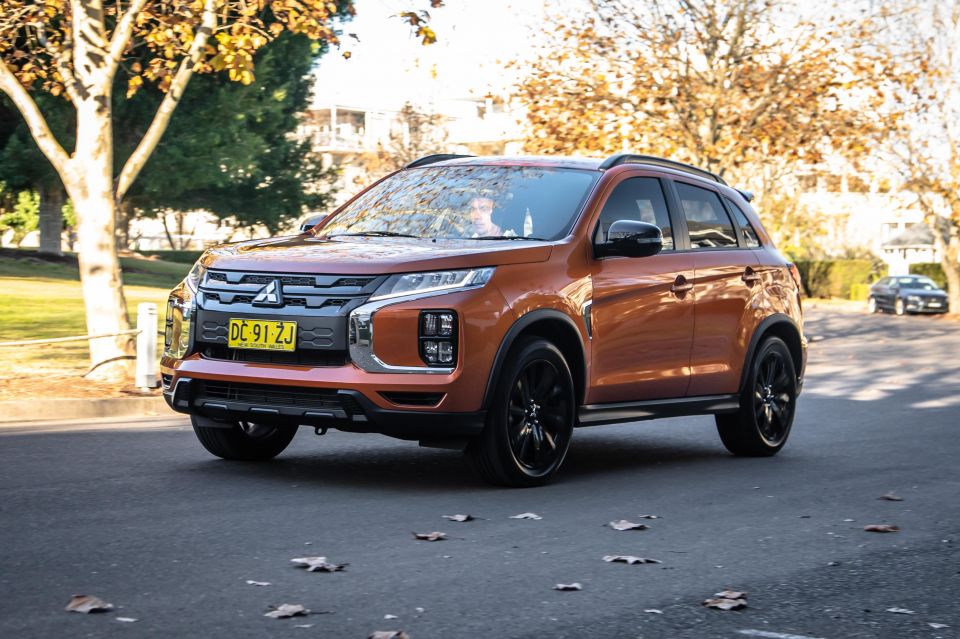
Usually, unpretentious naturally-aspirated petrol/CVT-equipped cars are smooth at a cruise and seem unruffled under load, whereas the ASX’s 2.4 is, for the most part, quite the opposite. Again, refinement isn’t its strong suit.
The suspension tune is decent enough, in that there’s ample compliance across most road imperfections, and the sharpness experienced across speed bumps and potholes doesn’t shock through into the cabin too dramatically.
It’s not the nicest riding machine in its class, but it’s respectable enough. The suspension hardware is; however, quite noisy so that you tend to hear the bumps as much as you feel them.
Handling is actually pretty good, as you’d expect the sportiest variant to be, though there’s no technical indication in spec to suggest it brings a fitter tuning than other ASX variants.
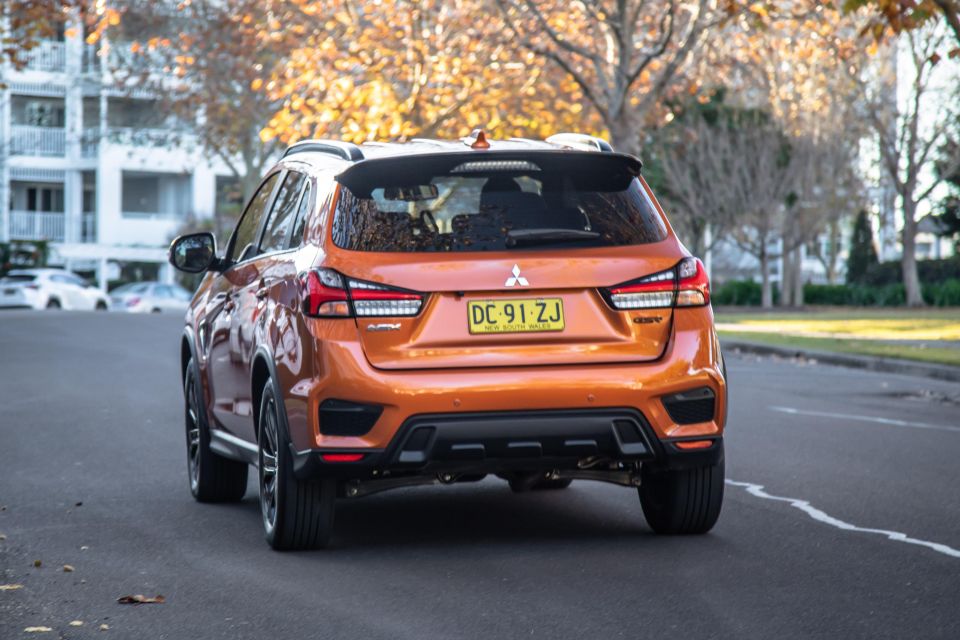
Where expert car reviews meet expert car buying – CarExpert gives you trusted advice, personalised service and real savings on your next new car.
But show the GSR some corners and it points well and the 225mm rubber grips up nicely enough in both the wet and the dry.
Out on the open road, the GSR is quite surefooted and planted. It tracks well and it’s fundamentally quite a settled and comfortable long-hauler.
If there’s an annoyance on a cruise or even around town it’s that the inert steering simply doesn’t like to self-centre.
It’s a generation-old trait which means that you’re actually applying constant small steering inputs when tracking a straight line. This does get a little tiresome.
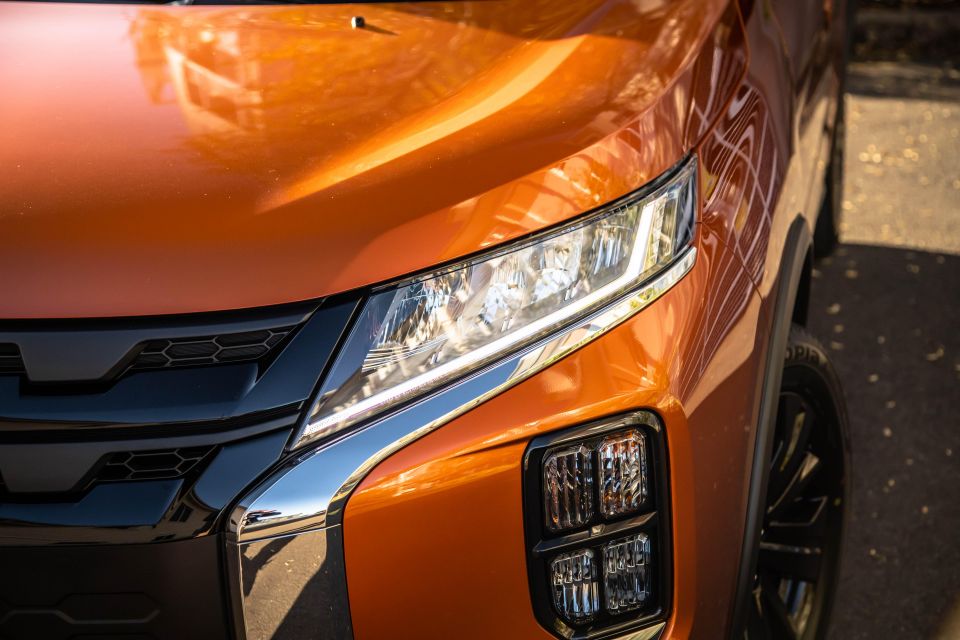

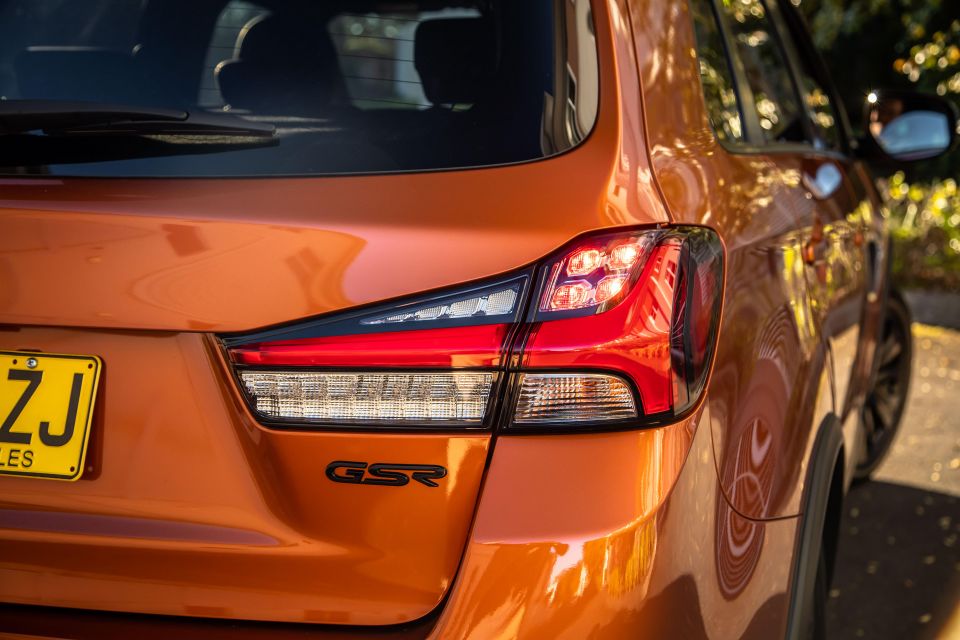

ASX GSR highlights:
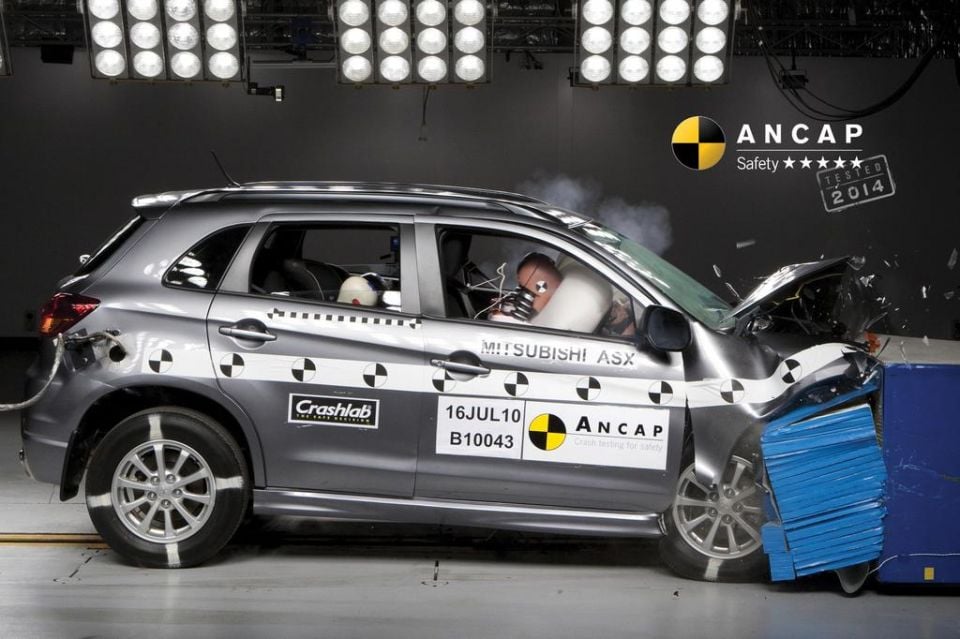
The ASX scored a five-star ANCAP rating in 2016 off the back of 2014 testing.
However, the report has been updated, in 2019, in sympathy of range-wide AEB fitment – including pedestrian detection smarts – as well as other items in Mitsubishi’s ADAS-branded suite of safety features.
Safety features include:
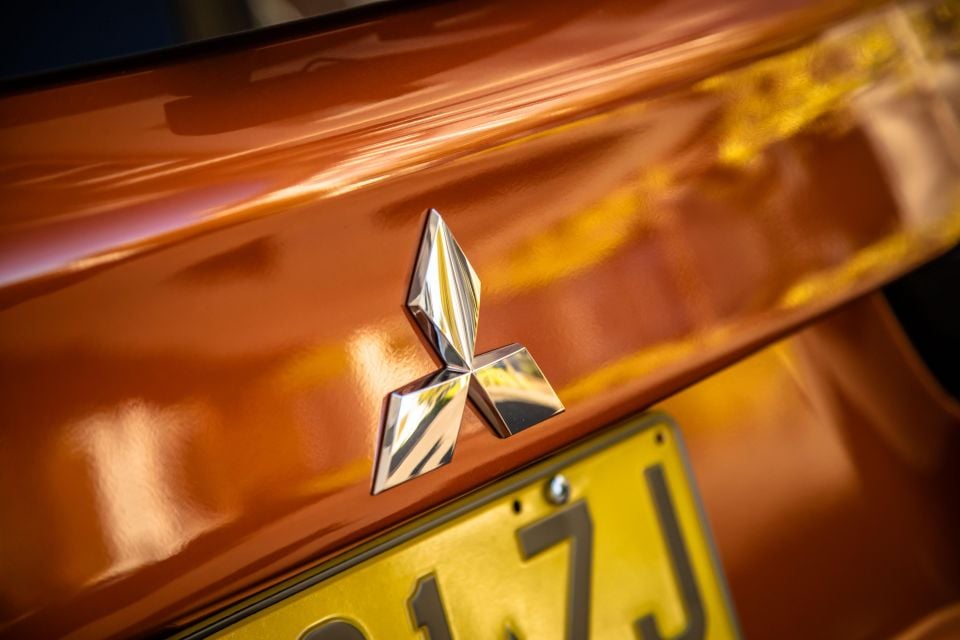
The ASX is covered by Mitsubishi’s unprecedented 10-year warranty provided you service within the Mitsubishi dealer network (otherwise it’s five years).
It’s capped at 200,000km, rather than the not uncommon unlimited-kilometre surety, though realistically that’s a veritable lifetime of distance for many owners.
Currently, Mitsubishi’s so-called Diamond Advantage also includes 10 years/150,000km of capped-priced servicing, clearly on 12 month or 15,000km intervals. Each visit will cost $299 except the sixth, eighth and tenth visits – each costing $599.
Against its 8.0L/100km combined claim, our tester returned figures into the nines on test, albeit with a fair amount of low-speed urban driving.
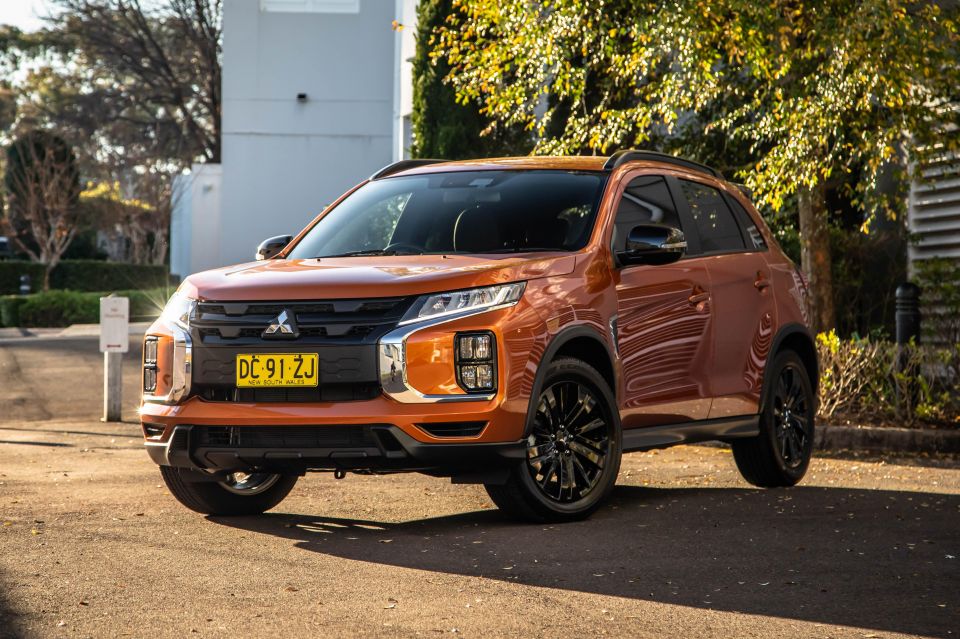
There are many and varied valid reasons for ASX’s long run of popularity with private and commercial buyers.
While the original ASX really helped mint the concept of a contemporary crossover with more lifestyle than family-friendly leanings, it’s job of carving appealing space in an ever-advancing segment is getting tougher as time moves along.
Where the ASX really maintains its shine is in buck-banging value.
It’s probably better served with the likes of the more-affordable 2.0-litre variants – with pricing beginning with a two – than it is upstream in the $30k-plus band where it confronts a lot of more contemporary opposition.
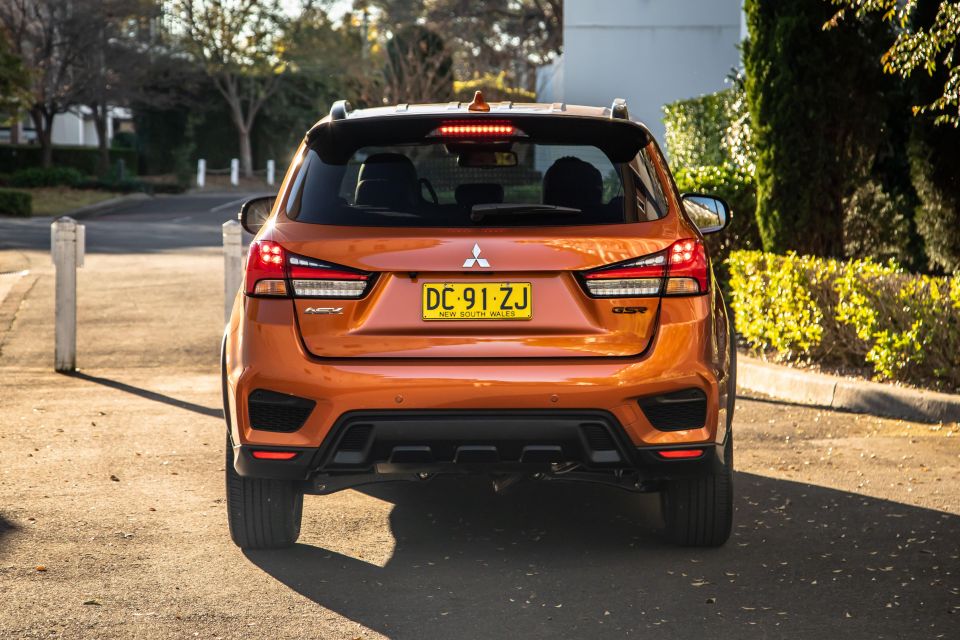
Click the images for the full gallery.
Where expert car reviews meet expert car buying – CarExpert gives you trusted advice, personalised service and real savings on your next new car.


Max Davies
7 Hours Ago


William Stopford
23 Hours Ago


Ben Zachariah
24 Hours Ago


Derek Fung
1 Day Ago


Matt Campbell
1 Day Ago


William Stopford
2 Days Ago